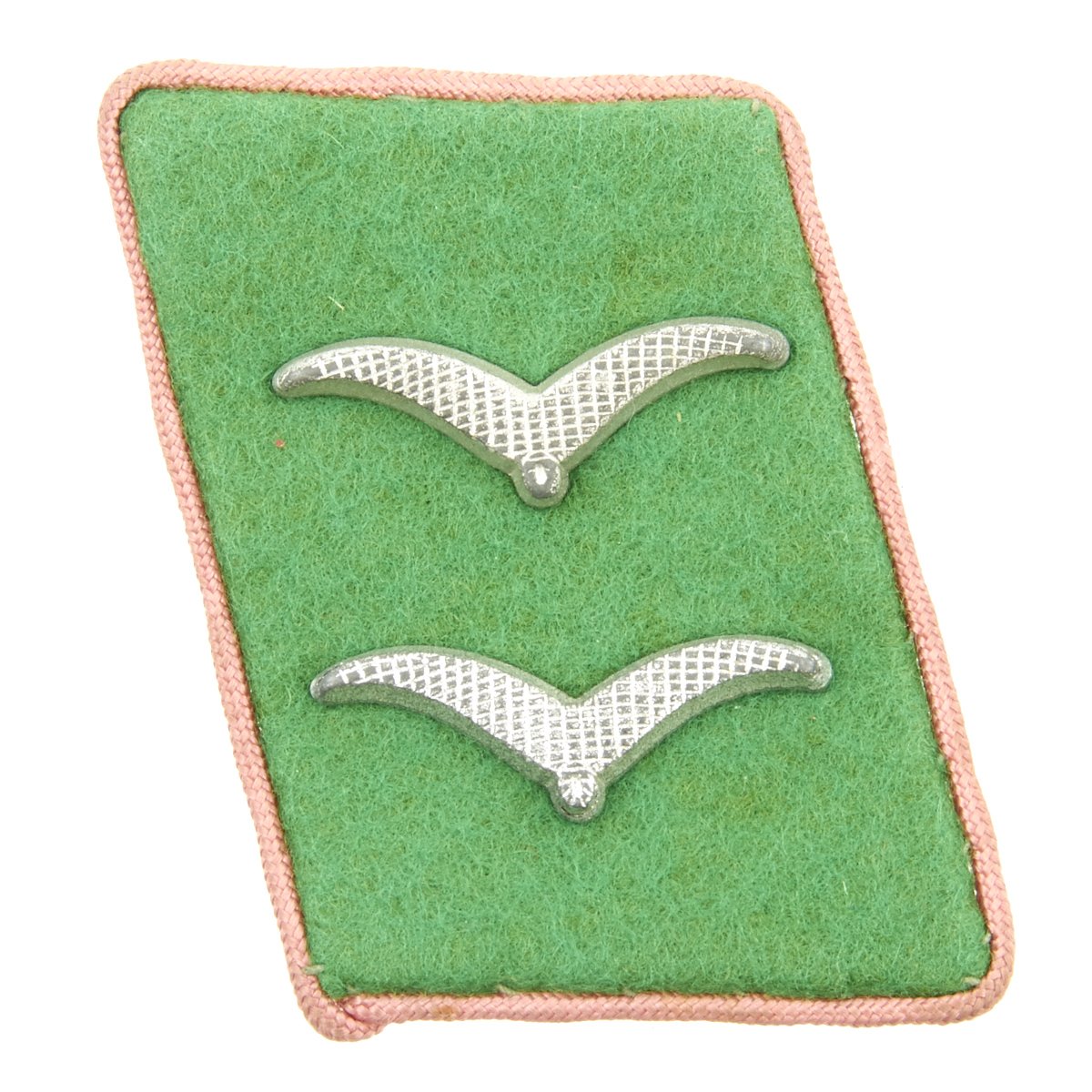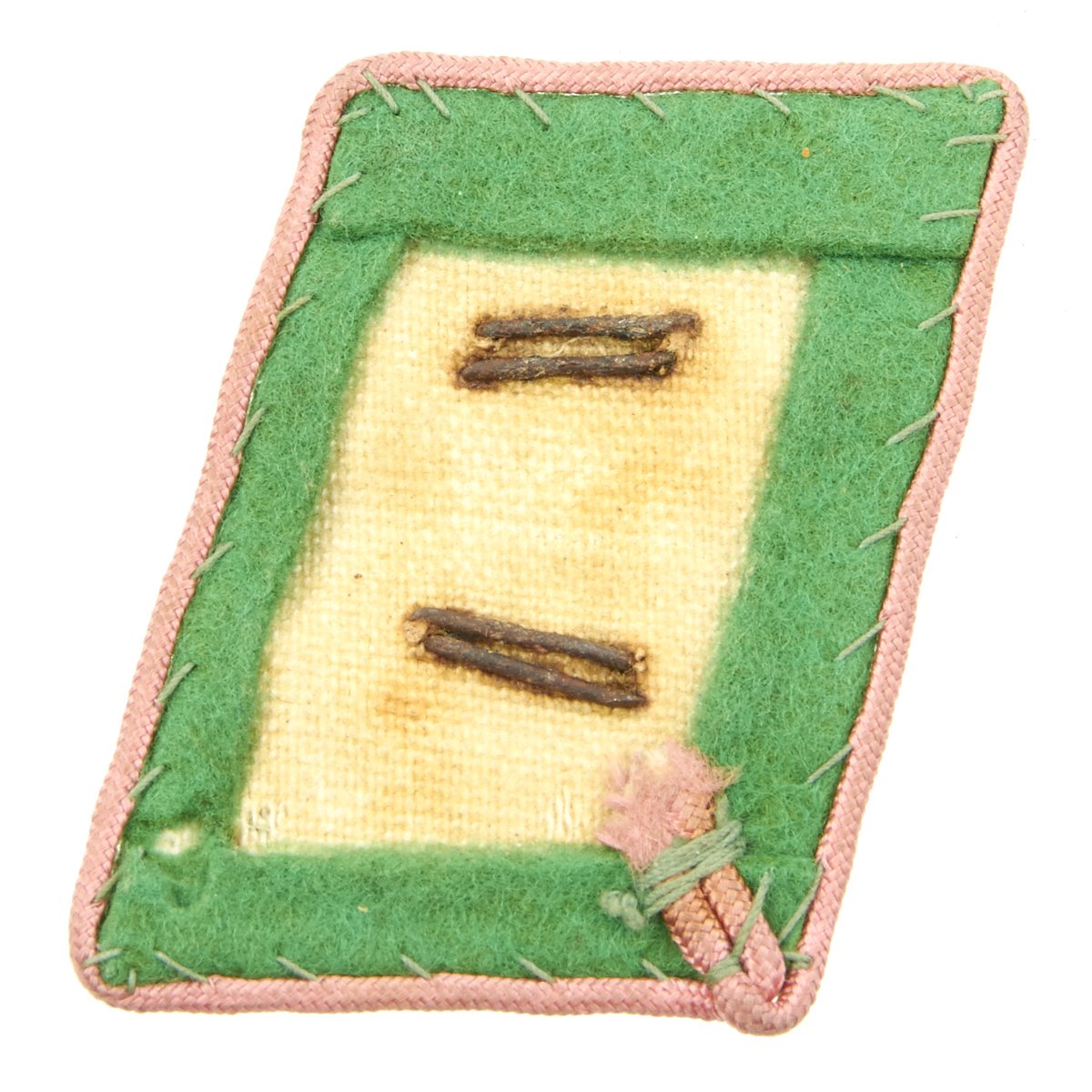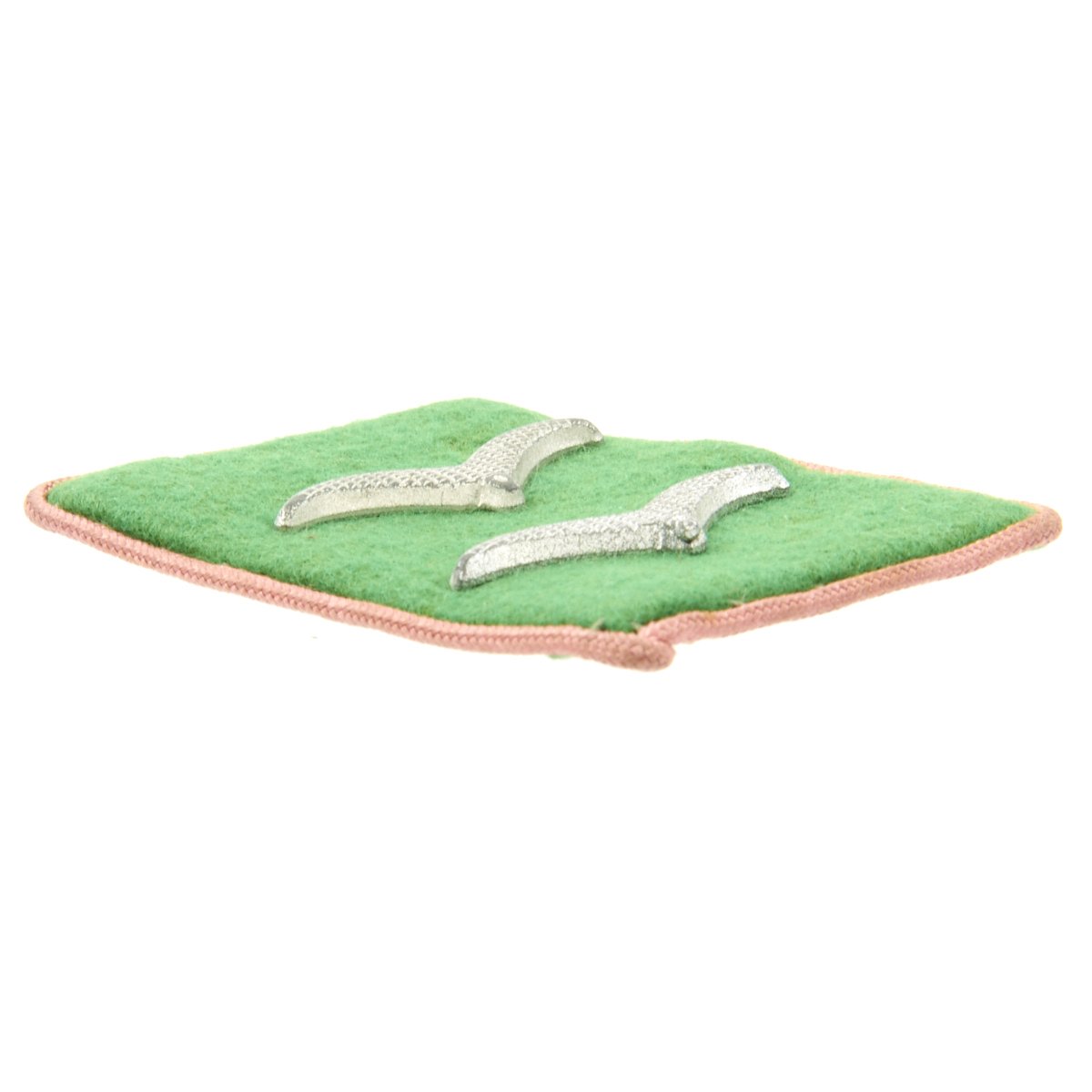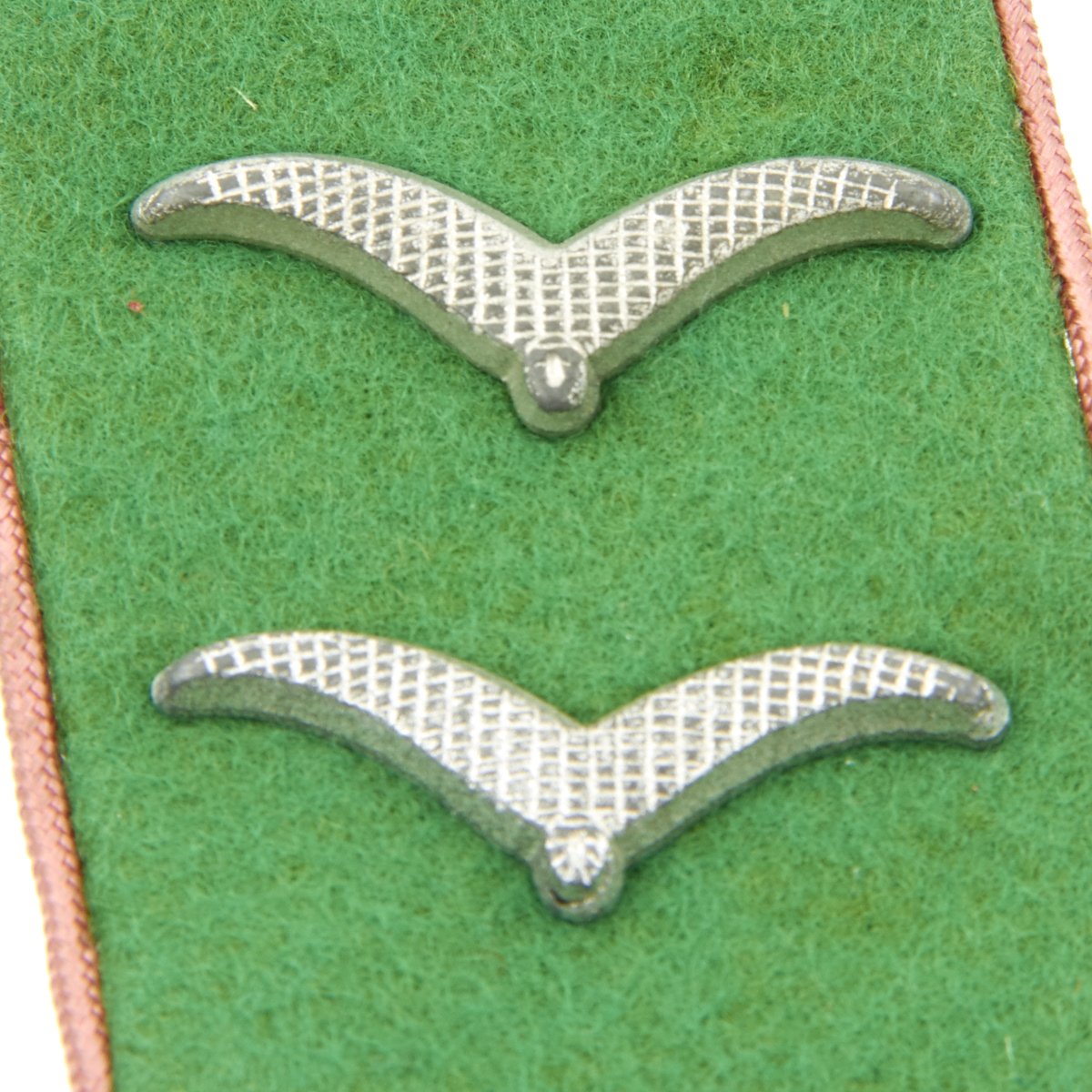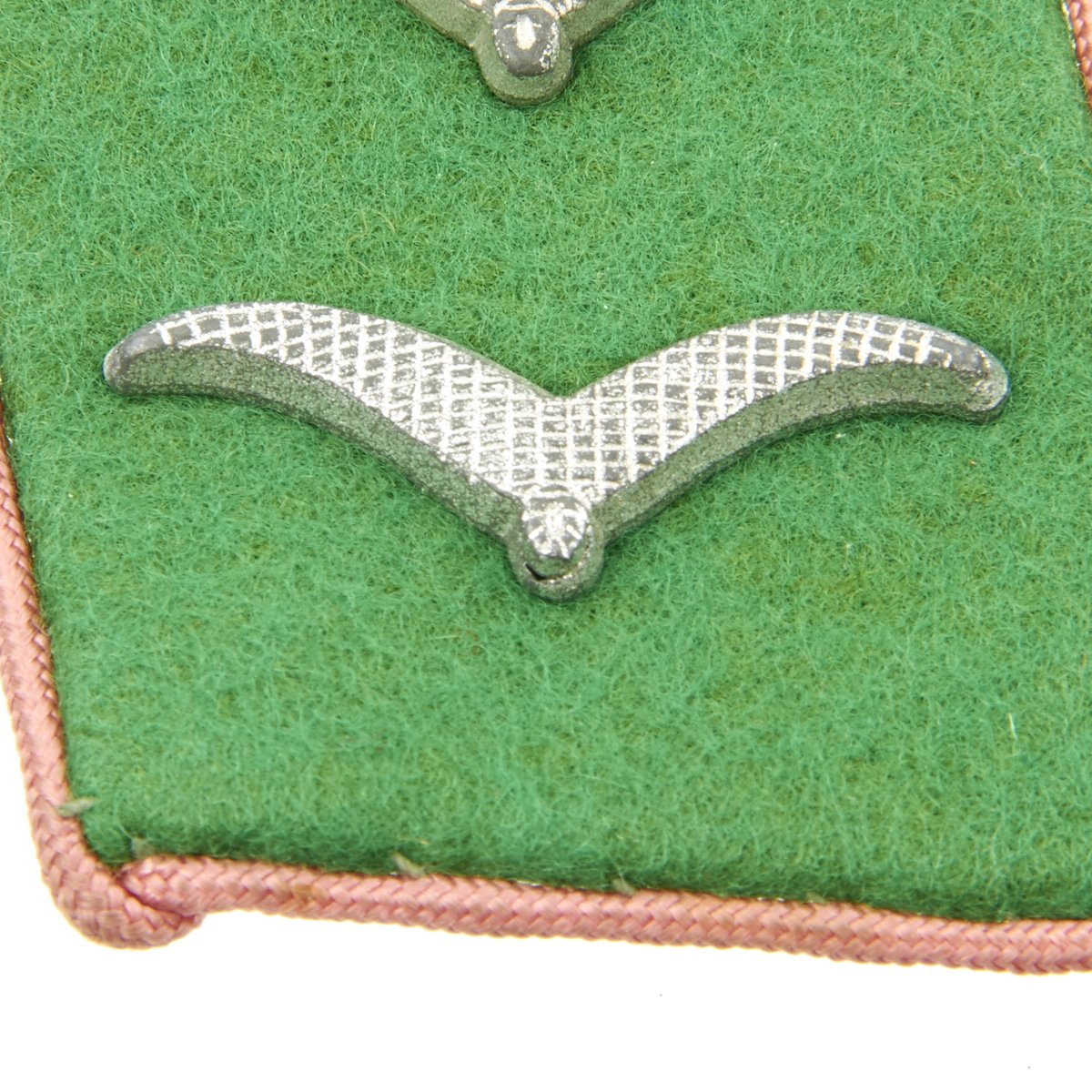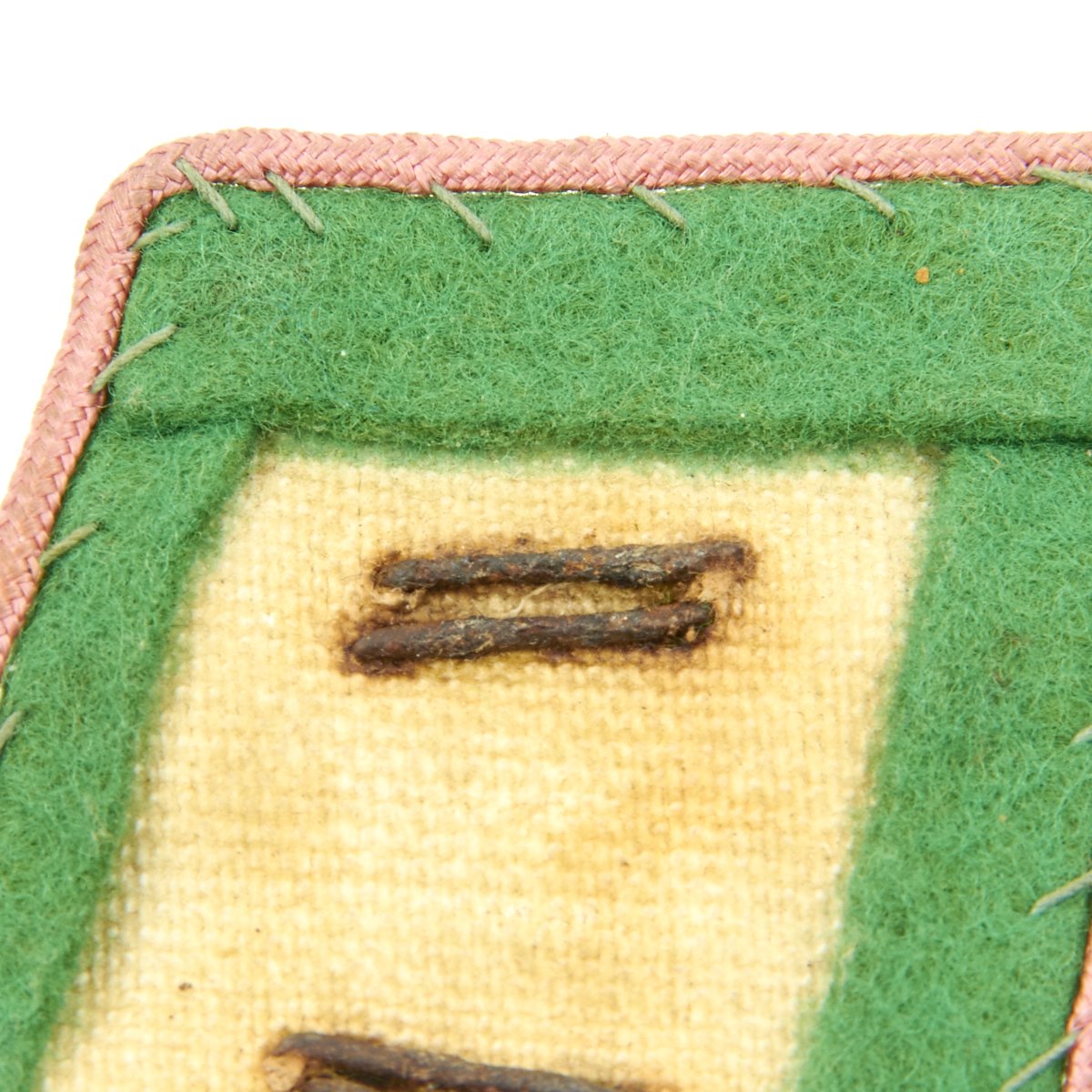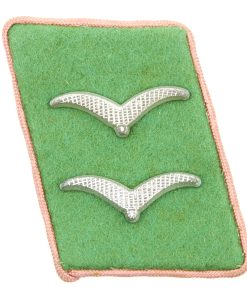Original German Luftwaffe Field Division Panzer Jager Rank Collar Tab Original Items
$ 175,00 $ 70,00
Original Item: Only One Available. Excellent condition Luftwaffe Field Division collar tab; constructed of green (Flaschengrün) wool, with pink Waffenfarbe piping on all four sides of the boards; with a two silvered zink gulls signifying the rank of Unterfeldwebel (Sergeant) ; all prongs intact on the reverse; standard buckram core; measuring 57 mm x 44 mm; extremely fine condition.
The Reichsluftwaffe was official established on February 26TH 1935 as the third branch of service of the Armed Forces. On March 9TH 1935 the formation of the new Reichsluftwaffe was announced to the foreign press and on March 16TH conscription was reintroduced for all three branches of service. On May 21ST 1935 the Reichsluftwaffe designation was altered to Luftwaffe. Collar tabs were adopted by the newly formed Luftwaffe on April 14TH 1935 and followed the basic pattern of the collar tabs that had been utilized by its earlier civilian forerunner the, DLV, Deutscher Luftsport Verband, (German Air Sports League). The collar tabs were worn in matching pairs and indicated the branch of service and rank of the wearer. The Luftwaffe field divisions were rapidly mobilized from Luftwaffe ground personnel in late 1942 and early 1943, to replace the massive lose of men on the Eastern front. Due to the lack of training and poor performance in the field, of the twenty-two divisions formed, seventeen were either destroyed or disbanded before the end of the war. In January 1943 distinctive, “Jäger-Grün”, (Rifle-Green), collar tabs with newly introduced branch of service piping were introduced to identify the Luftwaffe field troops.
The 6th Luftwaffe Field Division (German: 6.Luftwaffen-Feld-Division) was an infantry division of the Luftwaffe branch of the Wehrmacht that fought in World War II. It was formed using surplus ground crew of the Luftwaffe and served on the Eastern Front from late 1942 to June 1944 when it was destroyed during Operation Bagration.
The 6th Luftwaffe Field Division, one of several such divisions of the Luftwaffe (German Air Force), was formed in September 1942 in Gross-Born Troop Maneuver Area, under the command of Oberst Ernst Weber.Intended to serve as infantry, its personnel were largely drawn from surplus Luftwaffe ground crew. In November 1942, it was assigned to the 3rd Panzer Army in Army Group Centre on the Eastern Front and posted to a sector near Nevel. Here it defended against Soviet operations in the area.
In November 1943, responsibility for the division was transferred to the Army and it was renamed the 6th Field Division. Shortly afterwards, its Field Jager battalions became the 52nd, 53rd and 54th Jager regiments while its original artillery, tank destroyer and flak battalions was integrated into a new 6th Artillery Regiment. In the summer of 1944, the 6th Field Division held an area to the east of Vitebsk as part of LIII Corps of the 3rd Panzer Army. The division was encircled during the Vitebsk–Orsha Offensive at Vitebsk within days of the start of the Soviet Army’s Operation Bagration on 22 June 1944. The division was destroyed with its commander, Generalleutnant Rudolf Peschel,[Note 3] killed in action on 27 June 1944.
Fast Shipping with Professional Packaging
Thanks to our longstanding association with UPS FedEx DHL, and other major international carriers, we are able to provide a range of shipping options. Our warehouse staff is expertly trained and will wrap your products according to our exact and precise specifications. Prior to shipping, your goods will be thoroughly examined and securely secured. We ship to thousands clients each day across multiple countries. This shows how we're dedicated to be the largest retailer on the internet. Warehouses and distribution centres can be located throughout Europe as well as the USA.
Note: Orders with more than one item will be assigned a processing date depending on the item.
Before shipping before shipping, we'll conduct a thorough inspection of the items you have ordered. Today, the majority of orders will be delivered within 48 hours. The delivery time will be between 3-7 days.
Returns
The stock is dynamic and we cannot completely manage it because multiple stakeholders are involved, including our factory and warehouse. So the actual stock may alter at any time. It's possible that you may not receive your order once the order has been made.
Our policy is valid for a period of 30 days. If you don't receive the product within 30 days, we are not able to issue a refund or an exchange.
You can only return an item if it is unused and in the same state as the day you received it. You must have the item in its original packaging.
Related products
Uncategorized
Uncategorized
Uncategorized
Armoured Fighting Vehicles of the World: AFVs of World War One (Hardcover Book) New Made Items
Uncategorized
Uncategorized
Uncategorized
Band of Brothers ORIGINAL GERMAN WWII Le. F.H. 18 10.5cm ARTILLERY PIECE Original Items
Uncategorized
Uncategorized
Uncategorized
Uncategorized
Angolan Rebel 1970s era 60mm Inert Display Mortar from Angolan Civil War Original Items
Uncategorized
Uncategorized
Uncategorized
Uncategorized
Uncategorized
Australian WWII Owen MK1 Machine Carbine SMG Custom Fabricated Replica with Sling Original Items
Uncategorized
Uncategorized
Uncategorized
Uncategorized
